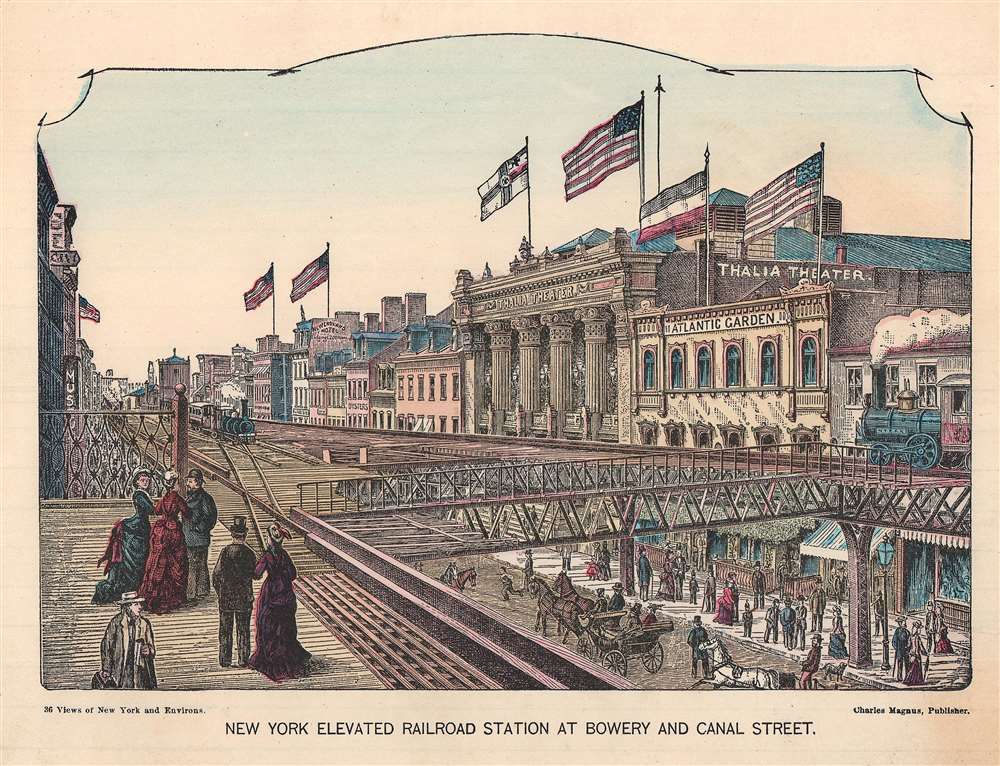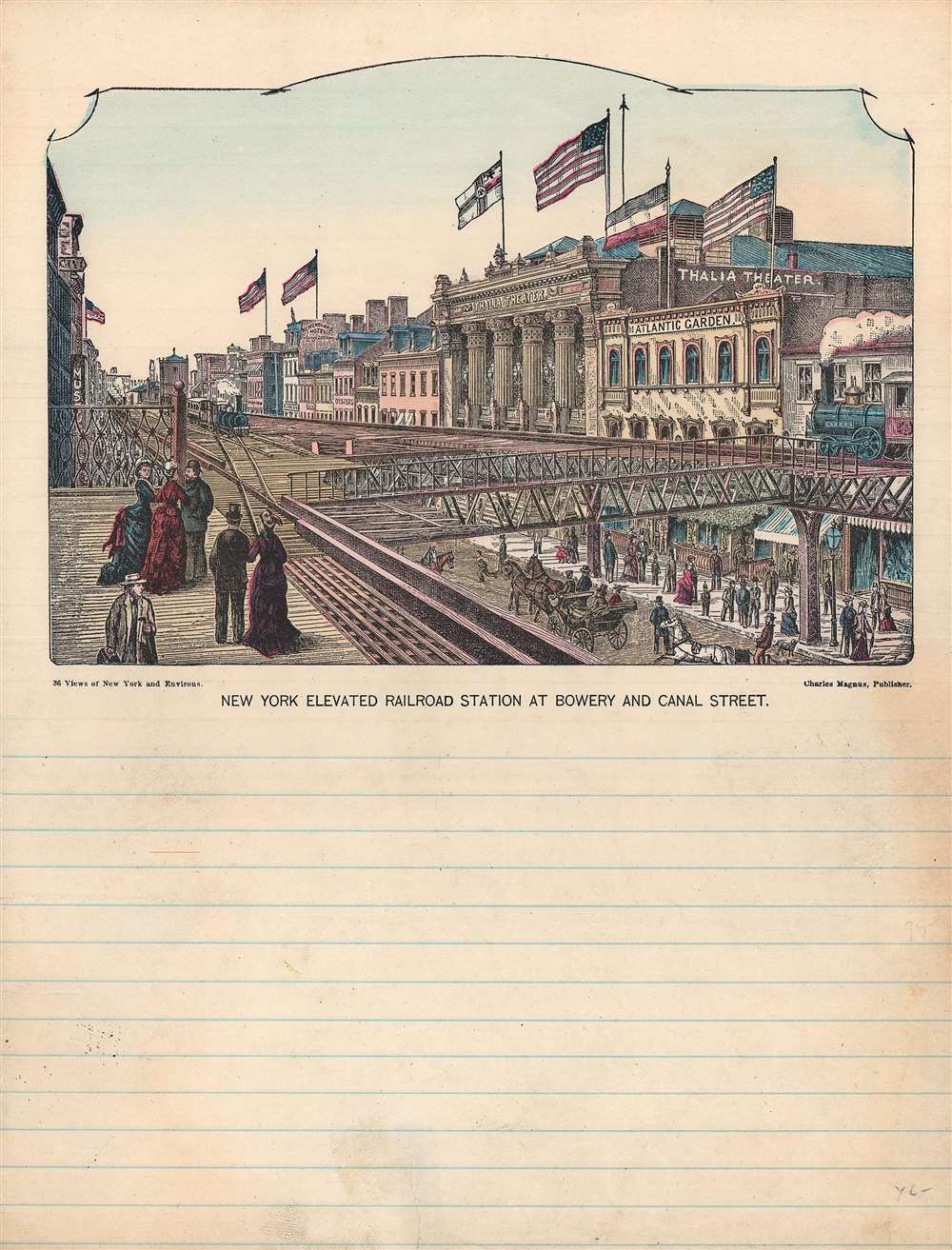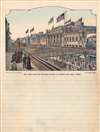1880 Magnus View of the Elevated Railroad at Bowery and Canal Street, New York City
BoweryCanalElevated-magnus-1880
Title
1880 (undated) 6 x 8 in (15.24 x 20.32 cm)
Description
The Thalia Theatre
The Thalia Theatre began as the Bowery Theatre, a playhouse on the Bowery in Manhattan's Lower East Side. It was founded in the mid-1820s as an alternative venue for high-class European drama, then only available at the Park Theatre. Opened on October 22, 1826, as the New York Theatre, the first few seasons featured opera, high drama, and ballet. On the evening of May 26, 1828, the New York Theatre burned down. The theatre was rebuilt and on August 20, 1828, opened as the Bowery Theatre. By 1830, the Bowery's audience had become more working class, which pushed its bookings from high-brow drama and theatre to acts that appealed to their working-class patrons, including melodramas, minstrel shows, and animal acts. Hybrid acts, such as melodramas about dogs saving their human owners, proved unprecedented successes. The theatre burned down two more times in the ensuing decades and changed owners a few times. After the fire in 1845, it was rebuilt with 4,000 seats and a 126 square foot stage, making it one of the largest theatres in the world. As the neighborhood became a home for new immigrants during the second half of the 19th century, the theater adjusted its programing. This began with Irish immigrants in the mid-19th century, followed by Germans (it was a group of three Germans who converted the Bowery Theatre into the Thalia Theatre in 1879), and Yiddish theatre was the predominant attraction by 1891. The Yiddish theatre was followed by Italian vaudeville, which was succeeded by Chinese vaudeville. The theatre burned down for the last time on June 5, 1929, when it was known as 'Fay's Bowery Theatre'.Publication History and Census
This view was published by Charles Magnus c. 1880 as part of his '36 Views of New York and Environs' series. The present example is published as a decoration on a piece of stationery. We have been unable to locate any other cataloged examples of this view in any form and given that the present example is published on stationery, it is likely the only surviving example.Cartographer
Charles Magnus (1826 - 1900) was a New York City based stationer, illustrator, bookseller, and map and print publisher active in the middle to late 19th century. Magnus was born in Elberfeld, Germany, as Julian Carl Magnus. Fleeing the March Revolution in Germany, the Magnus family immigrated to New York City in 1848. In New York, Charles' brother Carl Emil had already established himself as the editor of a German weekly newspaper, Deutsche Schnellpost. It was through his brother that Magnus learnt the printing and publishing trade. The earliest work to bear the Magnus inscription dated to the 1850s and includes various pictorial broadsides and maps intended to commemorate important events - the most notable for map enthusiasts being his 1855 map of New York commemorating the '79th Year of Independence of the United States'. During the 1860s and years of the American Civil War, Magnus, through various political connections, became one of the few illustrators with unrestricted access to Union military camps. He is consequently particularly well known for his authentic view of Civil War cities, personages, and events. Following the war, Magnus began to develop a prosperous business creating and selling panoramic city views, song sheets, and patriotic envelopes. In all Charles Magnus, with over 1000 known works, was one of the most prolific American printers of broadsides and other lithographs. More by this mapmaker...




